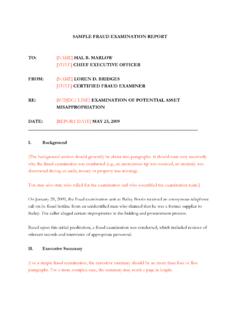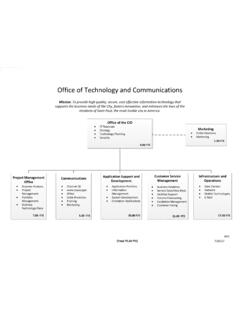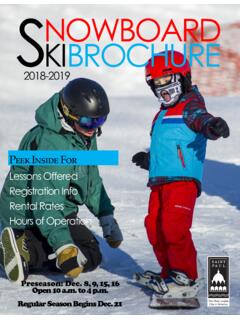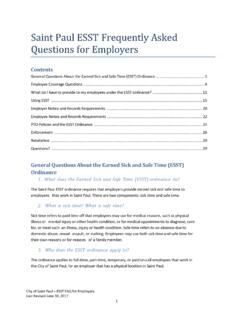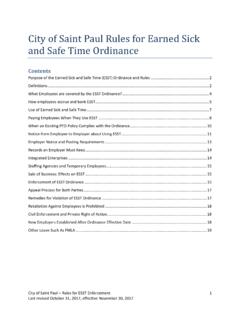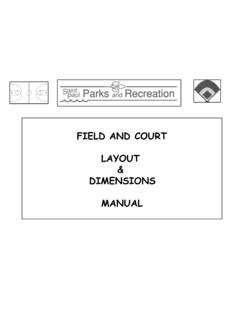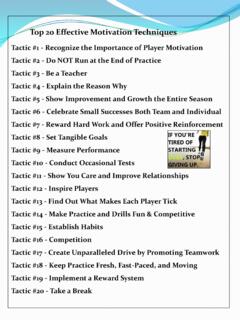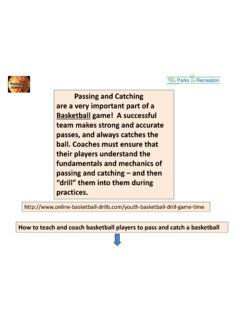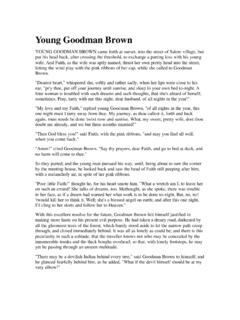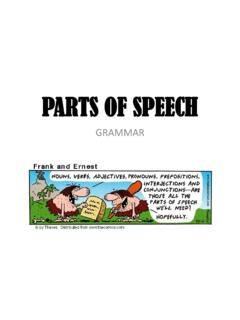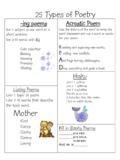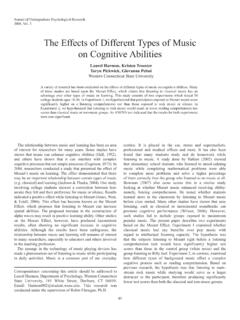Transcription of Basic Fundamental Skills of Volleyball and 8-Week Training ...
1 Basic Fundamental Skills of Volleyball and 8-Week Training Program Common Errors Causes Corrections Knowledge of the Basic Fundamental Skills of Volleyball , common errors, and suggested corrections will enable a coach to provide efficient and effective teaching and coaching strategies for every athlete. The following are described: serving, passing (forearm underhand passing), setting (overhead passing), attack options (hitting/spiking), blocking (from attack and defend positions), and defensive Skills (rolling & sliding). 1. Serving Serving is the first weapon that can generate an immediate point, begin a game, or ignite an offense. A well-placed serve (whether to a weak passer, at the setter, at the quick attacker, or to a weak formation) that is also difficult to pass puts the opponent at a disadvantage.
2 Focus on correct technique and strive for success. In addition, always serve to score points, NOT just to get the ball into the opponent s court. Keywords (Floater): Keywords (Topspin): 90 - 90 (tossing and hitting arm) 1/2 turn Contact through the center of ball Toss two-hand underhand Follow through (6 o clock to 12) Toss above head Toss (in front)-step-hit Toss-step-hit Open hand facing net Contact below center of ball Lift ball Snap wrist as extending arm Common errors for floater: 1. Error-cause-correction: cannot serve ball over net. Start close to net and throw ball over net. Gradually move back and try adding full arm swing and possibly a step. 2. Error-cause-correction: ball served in net.
3 Step may be too long, toss too low, toss too far in front or step eliminated. 3. Error-cause-correction: ball served out. Shorten follow through. Ball toss needs to be closer to body. Hit through ball, not under ball. 4. Error-cause-correction: ball spinning, not floating. Ball contact should be in middle of ball with no wrist snap. Toss ball in front and not above or behind head. 2. Passing (Forearm Underhand) Accurate and consistent passing can result in an aggressive multiple attack. Be sure that players are in the ready position preparing to execute the proper technique before the serve and during a rally. The athlete must face and focus on the oncoming ball. Ensure that the athlete s arms and hands are in the correct position with wrists together.
4 The legs are a little further than shoulder width apart with feet parallel. The ball is contacted on the forearms. Upon contact, the athlete maintains a stationary straight-arm position so that the ball rebounds off the lower part of the forearms and is directed to the target. The knees are extended to raise the arms forward upon contact. Straightening the legs completes the pass; the arms are behind the ball, and weight is transferred in the direction of the pass. Keywords: Wrists together (interlock fingers; hands together) Feet parallel Arms straight Carry the ball Arms slightly away from chest Extend knees forward Arms pointed downward about 45 Follow through to target Common errors for passing: 1.
5 Error-cause-correction: ball not getting to net. Get closer to ball and use more legs. 2. Error-cause-correction: ball to low. Angle arms away from body; arms and legs follow through at same time. 3. Error-cause-correction: ball too tight to net. Use minimal arm motion; check angle of platform. 4. Error-cause-correction: ball passed to left side of court. Contact ball more on right side of the center of body; follow through toward target. 3. Passing (Overhand, Overhead or Setting) Overhead passing or setting is the next important part of the pass-set-spike sequence for a successful attack. In fact, an excellent set from a bad pass can still result in a kill . The athlete forms a triangle with the fingers and thumbs of both hands around the ball above the forehead (thumbs do not touch).
6 Index fingers and thumbs form the triangle around 3 panels (18-panel ball). The elbows point slightly forward. Feet are approximately shoulder-width apart with right foot slightly forward. Knees are slightly bent, and body is leaning slightly forward. Eyes are focused on the ball. The athlete receives the ball with hands on the outside of the ball. The athlete extends the knees and straightens the arms to follow-through in the desired direction. Keywords: Hands up early Wrists straight (not laid back) Forefingers & thumbs around three panels Elbows slightly down and forward (not out) Hands around the ball Follow through (straighten arms) and hold Thumbs to cheekbones position Common errors for setting: 1.
7 Error-cause-correction: ball set too tight to net. Square the hips, knees and feet to the 5 position. Keep set 3 off the net. 2. Error-cause-correction: 5-ball set too far inside. Extend follow-through out and use arms and legs together. Transfer weight forward. 3. Error-cause-correction: ball set too far inside for 15 set. Contact set same as for 5. Follow through and allow shoulders to lay back as part of follow through. 4. Error-cause-correction: 5 set too far outside court. Contact with ball is too low. Follow through too low and/or hands too low. Drills introducing the proper setting technique: a. Toss ball above head and catch. (Each player stands in correct setting position by straddling a line, preferably the attack line or end line.)
8 1) Toss ball above the head and catch ball with hands in correct setting position. 2) Toss ball above the head: perform 1/2 turn; repeat and perform full 360-degree turn. 3) Toss ball in different directions and catch ball with hands in correct setting position. 4) Toss ball above the head: perform quick-quick (complete half turn and back to position). b. Toss two-handed underhand between players (hands and body in correct setting position). Toss ball two-handed underhand; partner catches ball with hands in correct setting position. c. Progression for Training Setters (Coach at net; setters receive passes when in left back, right back and center back positions and sets to LF and RF.
9 1) Technique Training 2) Training for setter to move into position 3) Training for sets near the net in front court (coach in backcourt: LB, CB, & RB) 4) Training for backcourt sets 4. Attack (Hitting) Options There are several attack options that can be effectively performed in a game. An attacker should be able to hit the following: shots off the block (using the hands), high sets, low sets, sets off the net, off-speed shots, tipping, and a variation of play sets including back court hitting options. Providing a great deal of practice and repetition of each will depend on the age and ability of the athletes. Ensure the Fundamental technique of hitting is effective and efficient so that it can be performed at a high level during competition.
10 With regard to spiking, the athlete must first be able to demonstrate the spiking motion when on the floor (with modified and full arm swing). Second phase is arm swing, which is started with both arms at side of body. Arms are taken straight back and then thrust forward and immediately up. Third phase includes athlete jumping and spiking. As the athlete begins to jump, her spiking arm is raised with elbow shoulder high. At the top of jump, the elbow leads as the arm is extended and wrist snaps so that the heel of the athlete s hand contacts the ball and follows through. The athlete must land softly and be in control of the landing. This is a high jump, not a long jump. Fourth phase the athlete uses only the step-close (right-left for right handers and left-right for left handers) or step 2 and 3 of the modified spiking approach.

